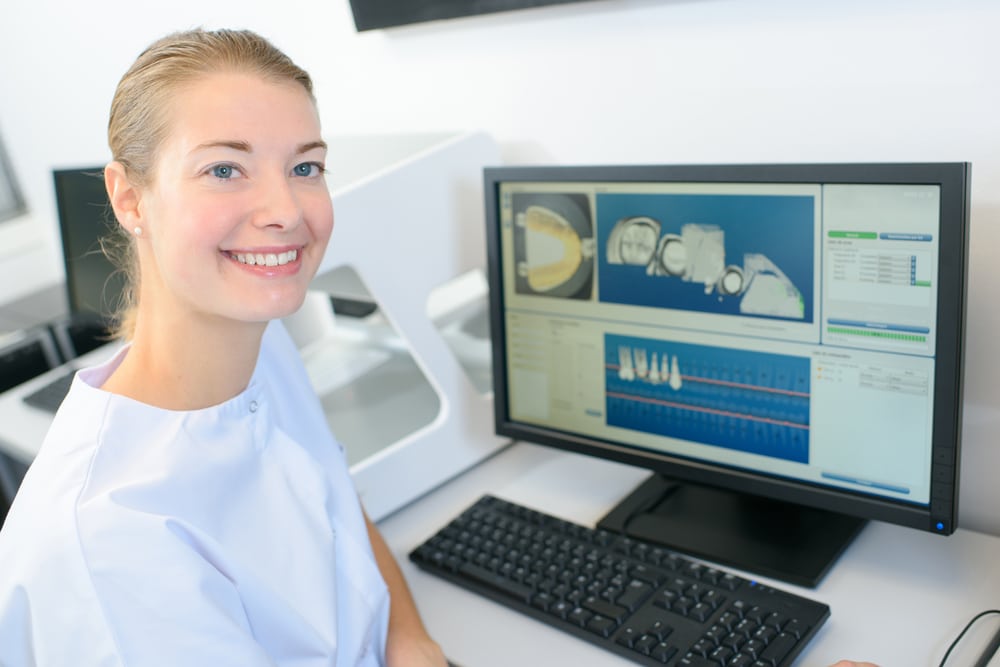Dental IT Security: Best Practices for Protecting Patient Data
In today’s digital age, ensuring the security of patient data is more critical than ever. For dental practices, this means implementing robust IT services and security measures to protect sensitive information from cyber threats. In this article, we’ll explore six best practices for protecting patient data, focusing on dental IT services, dental IT security, and patient data security.
Implement Strong Password Policies
Enforcing strong password guidelines is one of the easiest and most efficient methods to safeguard patient information.
Ensuring all staff members use complex, unique passwords can prevent unauthorized access to your systems.
Tips for Strong Passwords
- Incorporate upper and lower case letters, a few numbers, and special characters.
- Avoid using easily guessable information, such as birthdays or common words.
- Change passwords on a routine basis, and do not reuse old passwords.
- Utilize a password manager to create and save robust passwords.
Use Encryption for Data Protection
Encryption is a critical component of dental IT security. Encrypting patient data ensures that even if unauthorized individuals gain access to your systems, they cannot read or use the information.
Types of Encryption
- Data at rest encryption: Protects data stored on devices and servers.
- Data in transit encryption: Secures data being transmitted over networks.
- End-to-end encryption: Ensures data remains encrypted from the sender to the receiver.
Implementing these encryption methods will bolster your dental IT services and protect patient data from potential breaches.
Regularly Update Software and Systems
Old software may have weaknesses that hackers can use to infiltrate your systems.
Steps to Stay Updated
- Turn on auto-updates for your operating systems and applications.
- Regularly update all software, including antivirus.
- Use reputable dental IT service providers to ensure your systems are always up to date.
Conduct Regular Security Audits
Conducting routine security audits is crucial to spot potential weaknesses and confirm the effectiveness of your dental IT security strategies.
By conducting these audits, you can address any weaknesses before cybercriminals exploit them.
What to Include in a Security Audit
- Review of access controls and user permissions.
- Assessment of encryption methods and their effectiveness.
- Examination of software update practices.
- Analysis of network security, including firewalls and intrusion detection systems.
Conducting thorough security audits will help you maintain a strong security posture and protect patient data.
Educate and Train Staff
Human error is one of the leading causes of data breaches. Educating and training your staff on dental IT security best practices can help manage and reduce the risk of accidental data breaches.
Key Training Topics
- Importance of solid passwords and how to create them.
- Identifying phishing emails and various social engineering threats.
- Proper handling and storage of patient data.
- Reporting suspicious activities and potential security threats.
Regular training sessions and updates will inform your staff about the latest security threats and the corresponding best practices, further protecting patient data.
Implement Access Controls
Restricting access to patient data is another crucial aspect of dental IT security. By implementing access controls, you ensure only authorized personnel can access sensitive information.
Types of Access Controls
- Role-based access control: Assigns access permissions based on an individual’s role within the organization.
- Multi-factor authentication: Requires multiple forms of ID for data access.
- Least privilege principle: Grants users appropriate access levels for their job functions.
Implementing these access controls will help safeguard patient data and prevent unauthorized access.
The Role of Dental IT Services
Dental IT services play a vital role in protecting patient data. By partnering with a reputable dental IT services provider, you can ensure that your practice has access to the latest technologies and security methods and measures. These providers can help you implement the best practices discussed in this article and provide ongoing support to maintain a secure environment.
Benefits of Dental IT Services
- Access to expert knowledge and resources.
- Regular software updates and security patches.
- Comprehensive security audits and assessments.
- Employee training and education on security practices.
By leveraging the expertise of dental IT services providers, you can focus on providing excellent patient care while ensuring their data remains secure.
Ensuring the safety of patient information is a paramount duty for dental practices. Implementing strong password policies, using encryption, regularly updating software, conducting security audits, educating staff, and implementing access controls can significantly enhance dental IT security. Partnering with a reputable dental IT services provider can further strengthen your security measures and provide peace of mind.
Remember, the security of your patient’s data is essential for maintaining trust and ensuring the success of your practice. Start implementing these best practices today to safeguard your patients’ information and protect your dental practice from potential cyber threats.




